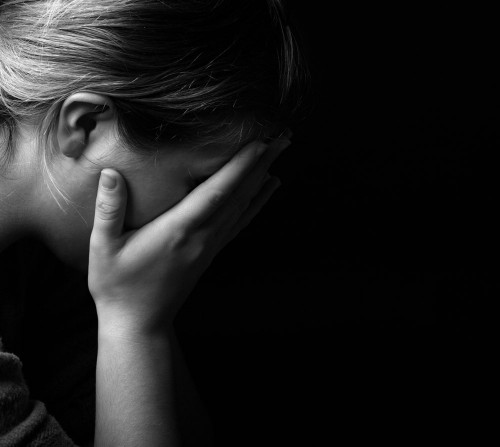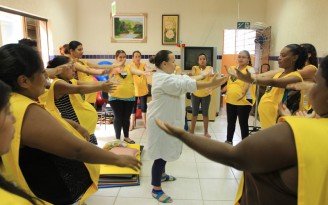
Breaking the silence: An important step for fightng violence against women
Sandra Albuquerque Fernández
Friday | January 29, 2016 | 12:42 PM | Last update: September 22, 2016, 4:07 PM (Brasilia time)
In any period of history, women have always been exposed to violence. The cinema established the stereotype of pre-historic man who, when wanting to mate, would drag the female to his cave by her hair and beat her around the head to stun her and, then, satiate his biological need. Indeed this being let himself be guided by his reproductive instinct. Despite thousands of years of human evolution, a sense of civility still seems not to exist in the attitudes of many men who claim to be rational. Imagine, dear reader, that while you are reading this paragraph thousands of girls and women all over the world are suffering some type of aggression—physical, sexual, psychological, economic—or are being murdered.
In a resolution adopted by the General Assembly in 1993, the United Nations (UN) defined violence against women as: “Any act of gender-based violence that results in, or is likely to result in, physical, sexual or psychological harm or suffering to women, including threats of such acts, coercion or arbitrary deprivation of liberty, whether occurring in public or in private life.”
According to studies, most of the crimes against the female gender can occur in secret within the domestic environment itself. Although this type of violence is an ancient practice, the laws or legal acts that regulate the punishment of the perpetrators of aggression are relatively new in the penal codes of many countries.

Violence in a global scale
Statistics worldwide show that violence against girls and women is still very common in daily life. It results in more victims than armed conflicts. Alongside gender inequality, this type of violence exists in all cultures, in working relationships, in civil wars, in wars between nations, and in love relationships; violence against women is not confined borders. Human trafficking, especially sexual exploitation and the trafficking of women, acquires dramatic dimensions and is becoming one of the most profitable illegal business, after selling weapons and drugs.
Violence is the main concern of the citizens of Latin America and the Caribbean, according to a report entitled “State of Latin American and Caribbean cities”, published in August 2012 by the United Nations Human Settlements Programme (UN-Habitat). The region has the highest murder rates in the world, at more than 20 cases per 100,000 inhabitants, while the world average is 7 per 100,000. According to the document, organized crime and domestic violence against women account for a large part of these rates.
In Europe, one in every four women have been assaulted in their home at least once in their lives. In France, delinquency rates have reduced since 2009, while the number of cases of violence against women have increased in the same period. Furthermore, a French woman dies every two days victim of marital violence.
In the United States, one woman is beaten every fifteen seconds, says the FBI, the United States Federal Bureau of Investigation. According to the national report on criminal statistics, called the “Uniform Crime Reports”, less than half of domestic violence incidents are reported to the police and a third of all femicides are committed by intimate partners.
Also in the USA, a report showed that boys who witness their father’s violence are 10 times more likely to engage in spousal abuse in later adulthood than boys from nonviolent homes (Family violence: Interventions for the justice system, 1993).
Besides the physical and moral consequences (which I will approach further on), it is worth highlighting that domestic violence costs the public coffers dear. For North Americans, the costs exceed US$ 5.8 billion a year: US$ 4.1 billion in medical services and health care and almost US$ 1.8 billion in lost productivity from paid work and present value of lifetime earnings (PVLE) (Costs of Intimate Partner Violence Against Women in the United States, 2003 Report, publication of the Department of Health and Human Services).
In Canada, 34 percent of women who suffer mistreatment and 11 percent of victims of sexual assault affirmed that they could not work the day after the aggression, which generates losses of 7 million Canadian dollars per year (Greaves, 1995).
A 2008 study by the Centers for Disease Control and Prevention of the United States showed that grievous bodily harm and homicide are the main causes of death of females aged 15 to 34. This is general information and it does not include the reason for the violence against women. However, when relating it to the data presented by the FBI, it is possible to verify that more women die from these acts of hostility than from cancer or heart disease.

For Swiss journalist Mona Chollet, marital violence is one of the main causes of female mortality. “It degenerates into death when one more blow is fatal to the victim, or when the man prefers to murder her before seeing her escape from his control—the period that follows the decision to separate was identified, as well as the period of pregnancy, as one of the moments when female partners of violent men are in greater danger.” (Chollet, in her article Machisme sans frontière (de classes), in the French newspaper Le Monde Diplomatique, in May 2005.)
Culture and social justice
Culture creates the myth of the idea of men as the main cause of social anomalies. German political philosopher Hannah Arendt (1906-1975) in her book Du Mensonge à la Violence considers that “Power is never the property of an individual; it belongs to a group (...).”
The philosopher looks in depth at the concept of power in order to distinguish it from the notion of vigor, strength, violence, and authority. But in transposing this definition to the sphere of aggression against women, we can understand that even in the violent action of a single individual motivated by the idea of power over another, he does it believing in a set of representations that are imposed as truths that, unfortunately, tell him that such is the natural state of things.
Right from birth, a large number of men share the same concepts that have been fixed for centuries and reproduced on a daily basis. The mentality that feeds the macho culture comes from a strong patriarchal legacy, the same legacy that teaches that men do not cry because this is a sign of weakness; that they need to play sports for men to show their virility and the potential of their male strength; and that they should not help with household chores because this is “women’s work”—after all, he is the man of the house, the provider. These and many other concepts reinforce the idea that to win in the world, in a society that is generous with its privileges and advantages for males, such as a higher salary, men need to be macho.
This is a case of the “eternalization” of culture, a concept emphasized by French sociologist Pierre Bourdieu (1930-2002) in his book Masculine Domination that, in other words, highlights the aspects of history that seem eternal. According to Bourdieu, “eternalization” happens via interconnected institutions that are charged with carrying it out, such as the family, religion, the State, schools, sports, and the media. Therefore, if interconnected institutions produce the effect of eternalizing these concepts, they should be reconsidered within the educational and development context of boys and girls.
The President of the Legion of Good Will, Brazilian journalist, radio broadcaster, and writer Paiva Netto, in a document sent to the UN in several languages during the 53rd session of the Commission on the Status of Women, in March 2009, wrote: “I reaffirm that world stability begins in the hearts of children. That is why at the LBV we have been applying for so many years now what we call the Pedagogy of Affection and the Ecumenical Citizen Pedagogy. (...) The affection that inspires our pedagogical model, taken in its highest sense, is, besides a lofty feeling of the Soul, a political strategy, equally understood in its most elevated nature, in consonance with Social Justice, as a survival strategy for individuals, peoples, and nations.”
For the LBV’s president, children must be treated with total love and respect, because after all, they will be the future political leaders, scientists, and citizens responsible for transforming history and for perpetuating the concepts of social justice. “The concept of Justice allied with Goodness, but never in connivance with evil. The question is not to transform ourselves into accomplices of what is wrong, but we need to incorporate into the Soul this elevated alliance with the feeling of benevolence that is born from the human heart created by a God who, in the definition of Jesus according to John the Evangelist, is Love” (Paiva Netto, in Jesus, o Profeta Divino [Jesus, the Divine Prophet], 2011).
And the writer continues, this time in another one of his books, “É Urgente Reeducar!” [It is Urgent to Re-educate!]: “Education, a theme always on the agenda. It is urgent that it be disseminated and faced by all of us as a safe path that shortens the distance among social classes. Education is also an efficient antidote against violence, criminality, diseases, and everything that harms the healthy development of the people.”
It is important to observe, as Paiva Netto points out, that the power to shorten distances lies in Education (which plays the role of forming “Brain and Heart”). If such distances exist it is because there was no cohesion between the parts, in other words, spaces were created and were filled with anomalies that generate social disturbances such as violence, multiplied in all degrees and in all sectors of society, and impunity. If these spaces are not filled with the values of “Truth, Compassion, Morality, Ethics, Honesty, and Brotherly Love, in short, the mathematics that harmonize the equation of human, mental, moral, and spiritual existence (...), it will be difficult to reach a truly Solidary Society,” writes the author of It is Urgent to Re-educate!.
Hope
I once read this phrase: “God always smiles when a child is born.” I believe that this saying presents an important message of confidence in the future. It is the Hope that Jesus left us in His Gospel according to John, 10:16: “I have other sheep that are not of this sheep pen. I must bring them also. They too will listen to my voice, and there shall be one Flock and one Shepherd.” The Sublime Educator bequeathed strong and inspiring messages to us, a constant invitation for reflection and the practice of Good deeds, as in this verse. We can interpret that the Divine Master does not want us to lose our identity, but that we all achieve the voice of understanding, the voice of union, and the voice of brotherhood, guided by a single shepherd, Love.
If walls could talk, they would attest to the immense suffering caused by domestic violence. Even so, pain, like the root of a flower, breaks through the soil in search of the sun, creating beautiful sweet-scented and colored shapes. Flowers in this context represent the unceasing efforts of civil society organizations, governments, the legal sphere, the media, health professionals, researchers, scientists, teachers, social activists, and above all citizens. Day after day, all these segments and individual initiatives contribute to making the statistics on violence a thing of the past, because they believe in human beings and in their transformation. “What shapes our Soul are the actions we practice. We are what we think and do,” says Paiva Netto.


